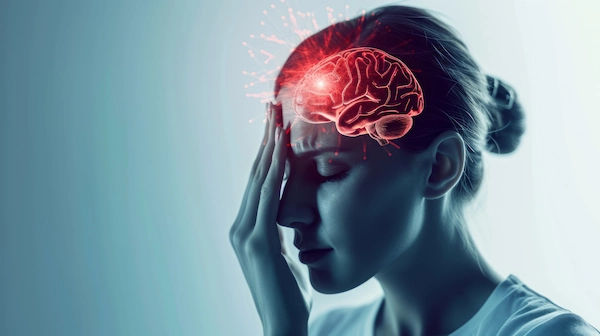Stroke Understanding the World’s Leading Cause of Disability
Know about stroke, what exactly is it, stroke effect, who is at risk, communication challenges, road to recovery and more.

Written by Dr. Md Yusuf Shareef
Reviewed by Dr. Shaik Abdul Kalam MD (Physician)
Last updated on 7th Oct, 2025

Introduction
A stroke is often portrayed in the media as a sudden, dramatic event. While that can be true, the real story of a stroke unfolds long after the ambulance has left and the initial emergency is over. It’s a story about the challenging journey of recovery and the often-permanent changes it brings to a person’s life. This isn't just a statistic; it represents countless individuals learning to walk again, talk again, and navigate a world that has suddenly become unfamiliar. The impact of a stroke extends beyond the physical, affecting cognition, emotion, and independence. But here’s the crucial message: stroke is largely preventable, and its disabling effects can be significantly reduced with prompt action. This article will guide you through what a stroke is, why it’s so disabling, how to spot one, and, most importantly, how to protect yourself and your loved ones.
What Exactly is a Stroke? A Brain Under Attack
At its core, a stroke is a "brain attack." It occurs when the vital blood supply to part of your brain is interrupted or severely reduced, depriving brain tissue of oxygen and nutrients. Within minutes, brain cells begin to die. The specific effects of a stroke depend on which part of the brain is damaged and how much tissue is affected. There are two main types of cerebrovascular accidents (CVA), each with a different cause.
Consult a Top Neurologist for Personalised Advice
Ischemic Stroke: The Clogged Artery
This is the most common type, accounting for about 87% of all strokes. An ischemic stroke happens when a blood clot blocks or plugs an artery leading to the brain. The clot can form directly in the brain's arteries (thrombotic stroke) or travel from elsewhere in the body, such as the heart, and lodge in a narrower brain artery (embolic stroke). Understanding the difference between ischemic and hemorrhagic stroke is critical because the emergency treatments are vastly different.
Hemorrhagic Stroke: The Burst Blood Vessel
A hemorrhagic stroke occurs when a weakened blood vessel in the brain ruptures and bleeds into the surrounding tissue. The leaked blood accumulates and compresses the brain structures. High blood pressure (hypertension) and aneurysms (balloon-like bulges in an artery) are common causes. While less common, hemorrhagic strokes are often more deadly.
Transient Ischemic Attack (TIA): The Warning Stroke
A Transient Ischemic Attack (TIA), or "mini-stroke," is caused by a temporary clot. The symptoms are identical to those of a full-blown stroke but typically last only a few minutes and cause no permanent damage. However, a TIA is a major warning sign that a more severe stroke may be imminent and should never be ignored.
By the Numbers: The Stark Reality of Stroke Disability
The statistics surrounding stroke are sobering. According to the World Health Organisation (WHO), over 15 million people suffer a stroke globally each year. Of these, approximately 5 million die, and another 5 million are left permanently disabled. This makes stroke the second leading cause of death and the primary cause of acquired adult disability worldwide. In many countries, the direct and indirect costs of stroke care—including healthcare services, rehabilitation, and lost productivity place a tremendous burden on families and healthcare systems. These numbers underscore why prevention and rapid response are not just personal health matters but issues of public health importance.
The Ripple Effect: How Stroke Causes Lasting Disability
The disability caused by a stroke is not a single condition but a cascade of challenges that affect nearly every aspect of life. The brain controls everything we do, so damage to a specific area results in the loss of function in the part of the body it controls.
Physical Disabilities: Paralysis, Weakness, and Fatigue
The most visible long-term effects of a stroke are often physical. Many survivors experience paralysis or weakness on one side of the body (hemiplegia or hemiparesis), typically the side opposite the brain damage. This can affect walking, balance, and coordination. Pain, numbness, and debilitating post-stroke fatigue are also common, making even simple tasks exhausting.
Communication Challenges: Aphasia and Apraxia
A stroke affecting the left hemisphere of the brain can impair language abilities, a condition known as aphasia. A person with aphasia may struggle to speak, understand speech, read, or write. Another condition, apraxia of speech, affects the motor planning for speech, making it difficult to coordinate the mouth movements needed to form words. Coping with aphasia after a stroke is a significant part of rehabilitation for many survivors.
1. Cognitive and Emotional Impact: The Invisible Disabilities
2. Often overlooked are the invisible disabilities. Stroke can impair memory, judgment, and the ability to focus. It can also lead to emotional lability, where a person cries or laughs uncontrollably. Depression, anxiety, and personality changes are very common, profoundly affecting relationships and quality of life. These challenges require as much attention as physical recovery.
Act F.A.S.T.: How Recognising Signs Saves Brains and Function
Time lost is brain lost. Recognising the signs of a stroke and acting immediately is the single most important factor in reducing disability. Remember the FAST acronym:
F - Face Drooping: Does one side of the face droop or is it numb? Ask the person to smile. Is the smile uneven?
A - Arm Weakness: Is one arm weak or numb? Ask the person to raise both arms. Does one arm drift downward?
S - Speech Difficulty: Is speech slurred? Is the person unable to speak or hard to understand? Ask them to repeat a simple sentence.
T - Time to call emergency services: If you observe any of these signs, even if they disappear, call for an ambulance immediately. Note the time when the symptoms first appeared.
Who is at Risk? Understanding Your Vulnerability
Certain factors increase your likelihood of having a stroke. Some you can't change, but many you can control.
Uncontrollable Risk Factors
These include age (risk increases after 55), gender (men are at higher risk, but women are more likely to die from stroke), family history, and race (African Americans have a higher risk).
Controllable Risk Factors: Where Prevention Begins
This is where you have power. The top controllable risk factors for stroke include:
1. High Blood Pressure: The leading cause of stroke.
2. Atrial Fibrillation (AFib): An irregular heartbeat that can cause clots to form in the heart.
3. Smoking: Damages blood vessels and increases clot formation.
4. High Cholesterol: Leads to plaque buildup in arteries.
5. Diabetes: Increases the severity of atherosclerosis (hardening of the arteries).
6. Physical Inactivity and Obesity.
The Road to Recovery: Rehabilitation and Regaining Independence
Stroke rehabilitation is a critical part of recovery. It begins in the hospital and continues for months or years afterwards. A multidisciplinary team—including physical, occupational, and speech therapists—works with the survivor to regain lost skills and learn new ways to perform tasks. The brain's ability to rewire itself (neuroplasticity) is the foundation of recovery. While progress can be slow, rehabilitation offers the best chance for regaining independence and improving quality of life. If you or a loved one is experiencing challenges with mobility or speech during recovery, consulting a rehabilitation specialist online with Apollo24|7 can help you understand the therapy options available.
Prevention is Power: How to Drastically Reduce Your Stroke Risk
The best way to deal with a stroke is to never have one. Up to 80% of strokes are preventable through lifestyle changes and managing medical conditions.
1. Manage Blood Pressure: Get it checked regularly. If you have hypertension, consistent monitoring and consultation with a doctor from Apollo24|7 is essential for keeping it under control.
2. Eat a Healthy Diet: A diet rich in fruits, vegetables, whole grains, and lean proteins (like the Mediterranean diet) is considered one of the best ways to prevent a stroke.
3. Exercise Regularly: Aim for at least 150 minutes of moderate-intensity exercise per week.
4. Quit Smoking and Limit Alcohol.
5. Manage Medical Conditions: Work with your doctor to control diabetes, AFib, and high cholesterol. Apollo24|7 offers convenient home collection for tests like HbA1c for diabetes and lipid profiles for cholesterol, making it easier to stay on top of your health.
Conclusion
A stroke is a life-altering event that stands as the number one cause of disability across the globe. Its impact is profound, affecting physical abilities, communication, and emotional well-being. However, this reality is not inevitable. Empowerment comes from knowledge: knowing the signs to act F.A.S.T, understanding your personal risk factors, and embracing a proactive approach to your health. Stroke prevention is fundamentally about cardiovascular health. By making conscious choices today whether it's choosing a healthier meal, taking a walk, or managing a chronic condition you are actively building a defense against disability. Share this knowledge with your family and friends. Awareness and action are our most powerful tools in the fight against stroke.
Consult a Top Neurologist for Personalised Advice
Consult a Top Neurologist for Personalised Advice

Dr Debnath Dwaipayan
Neurosurgeon
9 Years • MBBS, MS(Gen. Surgery), DrNB (Neurosurgery)
Delhi
Apollo Hospitals Indraprastha, Delhi

Dr. Avinash Gupta
Neurologist
12 Years • MBBS, DNB - Neurology
Bilaspur
Apollo Hospitals Seepat Road, Bilaspur
(150+ Patients)
Dr. Lakshaman K
Neurologist
19 Years • MBBS,MS General Medicine,MCH Neurosurgery
Bengaluru
R V speciality Clinic, Bengaluru
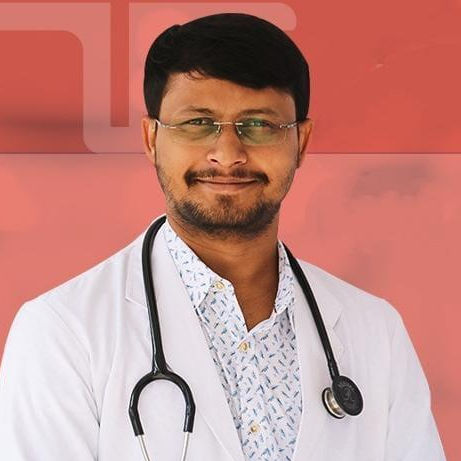
Dr. Ganeshgouda Majigoudra
Neurologist
10 Years • MBBS, MD ( GENERAL MEDICINE) DM (NEUROLOGY)
Bengaluru
Apollo Clinic, JP nagar, Bengaluru
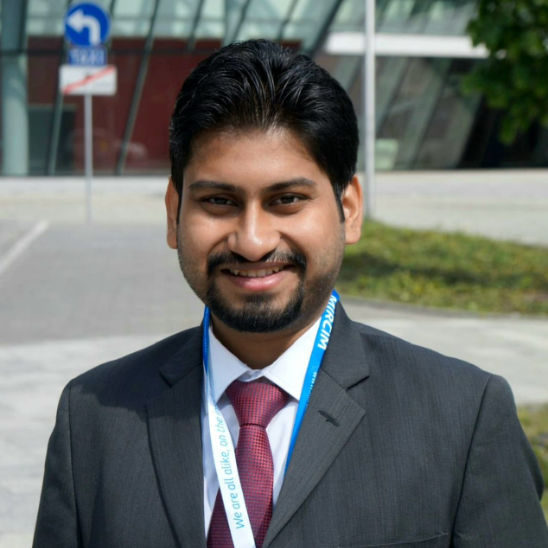
Dr. Uddalak Chakraborty
Neurologist
8 Years • MBBS, MD(GENL.MED.),DM(NEUROLOGY)
Kolkata
MCR SUPER SPECIALITY POLY CLINIC & PATHOLOGY, Kolkata
(25+ Patients)
Consult a Top Neurologist for Personalised Advice

Dr Debnath Dwaipayan
Neurosurgeon
9 Years • MBBS, MS(Gen. Surgery), DrNB (Neurosurgery)
Delhi
Apollo Hospitals Indraprastha, Delhi

Dr. Avinash Gupta
Neurologist
12 Years • MBBS, DNB - Neurology
Bilaspur
Apollo Hospitals Seepat Road, Bilaspur
(150+ Patients)
Dr. Lakshaman K
Neurologist
19 Years • MBBS,MS General Medicine,MCH Neurosurgery
Bengaluru
R V speciality Clinic, Bengaluru

Dr. Ganeshgouda Majigoudra
Neurologist
10 Years • MBBS, MD ( GENERAL MEDICINE) DM (NEUROLOGY)
Bengaluru
Apollo Clinic, JP nagar, Bengaluru

Dr. Uddalak Chakraborty
Neurologist
8 Years • MBBS, MD(GENL.MED.),DM(NEUROLOGY)
Kolkata
MCR SUPER SPECIALITY POLY CLINIC & PATHOLOGY, Kolkata
(25+ Patients)
More articles from Stroke
Frequently Asked Questions
1. Can young adults have a stroke?
Yes. While risk increases with age, strokes in young adults do occur. Factors like congenital heart defects, clotting disorders, substance abuse, and untreated high blood pressure can contribute. It's a myth that stroke only affects the elderly.
2. What is the difference between a stroke and a heart attack?
A heart attack is a blockage of blood flow to the heart muscle. A stroke is a blockage or bleed affecting the brain. Both are medical emergencies, but they affect different organs.
3. How long does stroke recovery typically take?
The most rapid recovery usually occurs in the first three to six months. However, recovery can continue for years thanks to neuroplasticity. The timeline is highly individual and depends on the stroke's severity and the consistency of rehabilitation.
4. What are the common emotional changes after a stroke?
Depression, anxiety, frustration, and emotional lability (quickly shifting emotions) are very common. These are direct results of the brain injury and are not a sign of weakness. Seeking psychological support is a vital part of recovery.
5. Are there any treatments to reverse the effects of a stroke?
There is no 'cure' that instantly reverses effects. However, emergency treatments like clot-busting drugs (tPA) or mechanical thrombectomy can drastically reduce disability if administered quickly. Long-term, rehabilitation is the primary treatment for restoring function.
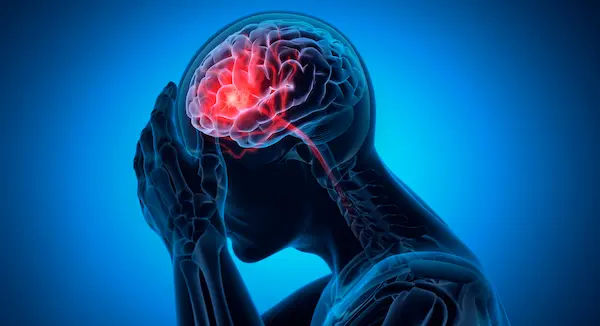
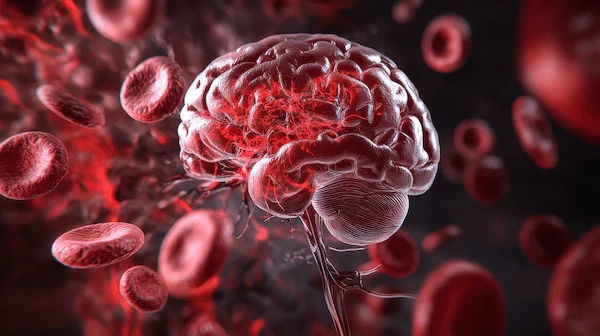
.webp)

